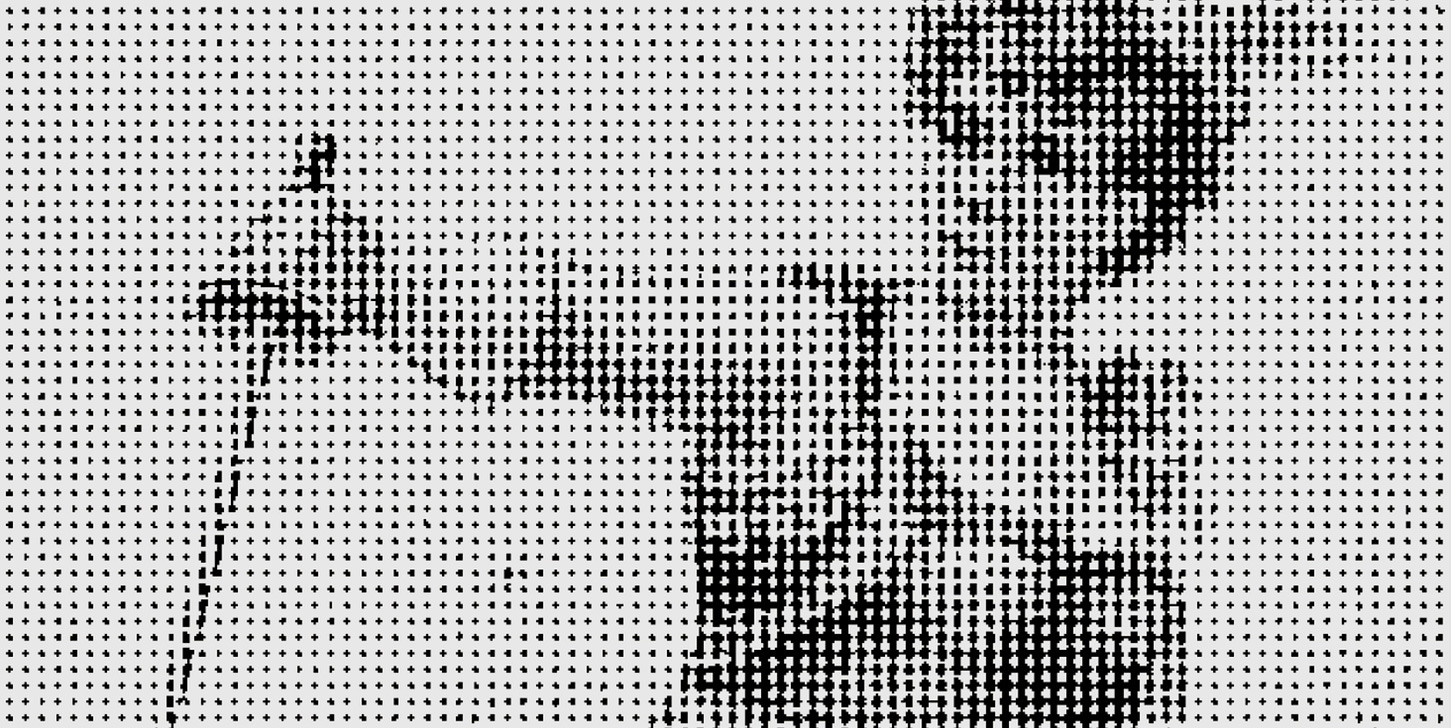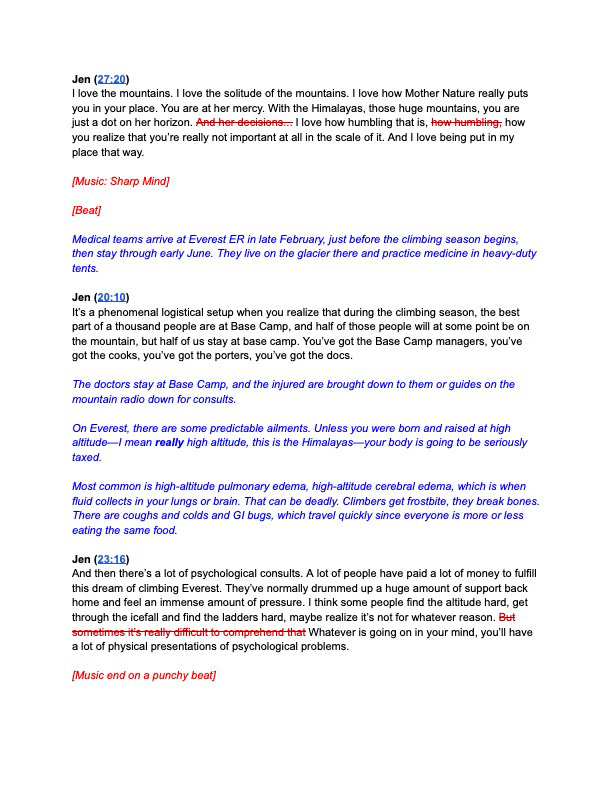How to Make a Podcast (Step by Step)
Behind the scenes of how an episode of How to Be Anything is made
I like learning how people do their jobs, so we’re going to show you how we do this one. I’m going to walk you through how an episode of How to Be Anything gets made, step by step.
Word of warning: I could not be more of a rookie.
I’ve been an avid podcast listener for more than a decade. In college, I would connect to the internet, download a bunch of podcasts into iTunes, then drag and drop them into the sidebar where my silver iPod Mini gobbled them up along with my music. There was no Podcasts app.
So when I started making How to Be Anything, I thought, like a rube, how hard could this be? Very.
I can’t tell you how slick production companies make a podcast because I’m not one of them. I’m just one person who pays a producer and an editor part-time to help me out, so I can only tell you how we do it. And in fact, if you have a better way, let me know!
So, here we go.
Identify a job or a guest
When my producer Lily and I trade notes on the feedback we get, this is definitely number one: Where do you find these people?
I hope you’re not disappointed when I say we 1) ask around, and 2) start with Google.
This podcast started (in part) when I realized I knew several people with unusual jobs, among them were my friend Erin Bishop the death doula and a talented local puppeteer named Heidi Rugg. I had met wilderness physician Dr. Jen Pond while reporting a different story. So, I asked them first.
But most people in my orbit work pretty ordinary jobs, so I had to expand my search. I posted requests on social media and in journalism networks I belong to and asked, I’m looking for people with unusual jobs. Do you know anyone?
That’s how I found D&D lorekeeper Skye Smith, who responded with this message:
I also asked friends and family, who would you like to hear from? My dad said he wanted to know about tower climbers, so we went and found a tower climber.
I’ll turn it over to Lily to describe how she did that …
I think you would be surprised at how willing and generous people can be. People love to talk about what they do. So far, Emily and I have only gotten one seriously weird response back!
I found Brendon King through a YouTube video. I love looking for guests on YouTube, through podcasts, or finding someone who has been quoted or interviewed for NPR. Finding them this way already gives me a leg up on sourcing people who want to talk about what they do and gives me a good opening to make the cold email (or Instagram DM) personal. We can also sneakily evaluate them on their storytelling abilities before ever contacting them.
I looked up tower climbers on YouTube, and I found Tommy Schuch’s excellent documentaries on the tower climbing industry. No brainer! I emailed him to connect and see if he knew anyone who would be interested in being on the pod. He gave me Brendon’s email and Brendon generously agreed to a discovery call, which then led to him being a guest on the show.
Lily or I then send them an email and ask … would you like to be on a podcast? Let’s schedule a call to talk.
— Lily
Be open as you go. I found the former corporate butler because I was reading another Substack newsletter, and I found Dr. Cindy Otto, who teaches dogs to sniff cancer, because I was watching a Netflix documentary about dogs. If someone interests you, email them.
Research
This is my first time making a podcast, and I’ve learned a lot about how much up-front research it takes. It’s very different than writing a profile for print, where I can go back to the source several times and collect comments in any form since it’s going to end up in writing either way.
Generally, the research process works like this:
Familiarize myself with the job. Are there documentaries about the field or subject matter? This is a good place to start because I can multitask and watch them while I (stationary) bike or wash dishes.
What about books? Has the guest written anything, like in the case of the astrophysicist Dan Hooper? Don’t be afraid to start with the most elementary information. For the episode on dark matter, I needed a basic-level primer to begin, so I went to a bookstore and looked in the children’s section for books about outer space.
Search everywhere on the topic: Podcasts, YouTube, Netflix, Substack, etc. Consume anything and everything you can. You’re learning the lingo, figuring out context, noting important events and names, etc.
Ask someone who knows the job or subject matter (who’s not your guest). I don’t play D&D, so for the episode about Skye Smith, my producer Lily talked to a friend who does and got ideas for what we should ask. For the episode on tower climbers, I talked to climber Tommy Schuch, who’s shaking the tree for better industry regulations.
Make a list of questions as you go; some you’ll need to answer on your own, and some will be for the guest during the recording.
Prep with the guest
We then schedule a 30-minute Zoom call with the potential guest. I talk them through the recording process, but mostly this is to assess a few things:
Are they good at talking about what they do? Some people are really talented but struggle to describe their work. I’ve had prep calls with people who never make the podcast.
Do they love their job? Though we’re certainly open to industry criticism, we generally want to hear from people who really, really dig what they do.
Do they have good stories to tell about their work?
What about an origin story? Was there a moment when they realized this is the path for them?
Episode recordings aren’t rehearsed, but we do our best to uncover ahead of time the stories we want our guests to tell.
Prep for the recording
Then I go back into research mode. Now that I’ve learned some more industry vocab and context from the prep call, I keep researching to make sure I understand the job to the best of my ability.
We then come up with a story arc, or at least the notes we want to hit. It’s usually things like origin story, path into the job, friction (as in, are there moments when they really hate their job?), and what it means to them.
We turn that into a list of questions that will guide the recording. Some guests want to know what they’ll be asked ahead of time, and we oblige. Others want to fly by the seat of their pants. Fine too.
Conduct the interview
We record for 60–90 minutes on Zoom. I’d love to be able to visit guests working in their element, but I don’t have the budget to do that … yet! It’s not cheap to get to the Arctic Circle.
Write the episode
Then I start writing. This is chaos, and I wish I could describe it. But generally … I transcribe the conversation with HappyScribe so I can work with text rather than audio (this I do every time), Then, I build an outline and start putting blocks of the guest’s statements into place, making notes for where I will insert talk tracks.
I end up chopping up the conversation quite a bit, stitching together different parts to make a good story without distorting meaning. The final product is a script, marked with music cues and beats (pauses).
Follow-up questions and fact-checking
We check facts. We confirm employment and licenses, statistics, and whether some things are feasible. For instance, in our interview, Brendon stated that he could see the curvature of the earth from his perch on a cell tower. I have no doubt it feels that way, but that’s not possible from 500 feet (his highest climb). We cut those bits.
Sometimes we still get it wrong. In the episode about the Foley sound artist Ronnie Van der Veer, I misstated the director of one of the films he worked on, so we noted a correction in the show notes.
Record the talk tracks
I then record my narration, sitting on the floor of my closet for optimal sound. I use Descript and a Shure MV7+ microphone.
Caden edits the show
I upload everything—script and notes, all audio files, and music—into a shared folder and send it to my editor Caden.
I’ll turn it over to him to tell you about the edit process:
First, I import all audio files into Logic Pro and do a preliminary mix with equalization, compression, and noise reduction. Then I export those files and upload them to a Descript session to start cutting out all pertinent clips for the episode in the correct order.
A lot of episodes are edited to flow smoothly and do not follow the original chronological order of the raw interview. Sometimes I’ll do a bit of noise reduction and audio restoration in Descript, just depends on the day, ya know? After that is finished, I export a single file back into Logic and add music and Emily’s talk tracks before putting the last little bit of mastering polish on the episode, export it, and shoot it off to Emily.
—Caden
Audio review
I listen over and over, at least three times. Then send notes back to Caden. These are usually small changes, like add a beat after this clip or I’ll re-record that talk track because I didn’t like my delivery. I try to do only one round of edits, but sometimes it becomes two or three. It goes back to Caden for edits, who, by then, is probably sick of my tinkering.
Publish!
We schedule the episode and celebrate on release day.
And that’s it! That’s how we make an episode of How to Be Anything. You can find us on Apple Podcasts, Spotify, or wherever you get your favorite shows.
Thanks for reading and for listening. As you can tell, we’re an indie podcast, so please show your support by texting a friend with your favorite episode. Every download helps. Don't forget to rate and review and tell us what you really think. Those go a long way too.
Bye!
Emily





